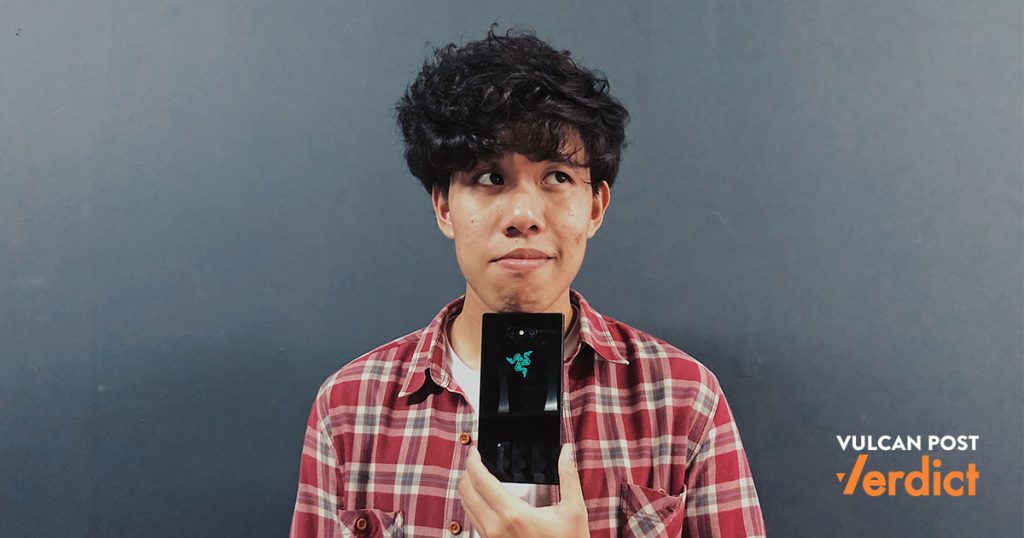If you haven’t already heard, the Razer Phone 2 just received a significant price cut, dropping from its original retail price of S$1,249/RM3,449 to S$829/RM2,749.
This comes just a few days after the release of Android 9.0 Pie, a major software update that introduced several new features such as gesture navigation, battery life optimisation, and 4K video recording at 60 frames per second.
It hasn’t been all sunshine and rainbows for the triple-headed snake, though.
Two weeks ago, Razer announced that it would be closing its digital game store after just 10 months of operation, and layoffs in its phone division have put the development of the next Razer Phone in question as well.
Needless to say, the question of whether you should get a Razer Phone 2 has gotten a little more complicated — does a reduced price make up for the increasingly uncertain future of this product line?
We happen to have one on hand, so we’re taking a look at its current state to find out.
Definitely For Gamers…
Specs-wise, the Razer Phone 2 has everything you’d expect from a modern flagship phone — a decent processor (Snapdragon 845 with 8GB of RAM), above average battery (4,000 mAH), and other quintessential features like a fingerprint sensor and wireless charging.
Apart from that, it has a few other unique features to justify its gaming phone moniker.
A 120Hz screen — which is a refresh rate better than some gaming monitors — makes both gameplay and general use smoother than most phones, and a “vapor chamber” cooling system ensures that it can handle even the most intense of play sessions.
Through the preinstalled Razer Cortex app the Razer Phone 2 is also equipped with a “Game Booster”, which allows you to overclock your phone for better performance.
On the flipside, you can also use this to underclock your phone when playing less graphically demanding games, which helps to conserve battery when you’re running low.
In our experience we found that these features did enhance our mobile gaming experience, with the 120Hz screen providing the most tangible impact.
There’s a noticeable improvement in gameplay quality thanks to how smooth everything is, and it’s hard to go back to gaming on other phones after using this one.
…Not So Much For Everyone Else
Gaming features aside, the Razer Phone 2 runs on a near-stock version of Android (there are less than five preinstalled apps), which is great for users who don’t want their phones to come filled with bloatware.
The Razer Phone 2 sounds like it’s shaping up to be a great phone, but its form factor is where things start to get a little more contentious.
Instead of the curved, bezel-less design that most brands are going for these days, it has adopted a much more traditional shape with unapologetically hard edges.
For an immersive audio experience, the phone also has two speakers flanking its 5.72-inch screen. This is great when playing games and watching videos in portrait mode, but a little less comfortable when holding it upright. It takes some finger gymnastics to navigate the screen with one hand, and the phone’s edges don’t help in that respect either.
Video capture might have received an upgrade in the latest Android update, but photography with the Razer Phone 2 unfortunately still leaves something to be desired.
Photos — while serviceable — are rather washed out, and aren’t as detailed when compared to brands who have been putting effort into their camera tech. The 12 megapixel dual rear camera also comes with portrait mode, but once again its results are a lot rougher than its competitors in terms of artificial bokeh.
If a good camera is something you need in a phone, the Razer Phone 2 might not be the one for you.
The Verdict
The Razer Phone 2 has found itself in quite the predicament — despite only being released last November (January in Malaysia), it’s already losing some of its relevance in the performance department thanks to upcoming phones like the Samsung Galaxy S10 and Huawei P30 Pro.
With the Razer Phone 3’s fate hanging precariously, you have to take future support into consideration as well.
If development of the next phone ceases, the chances of Razer slowing down (or outright eliminating) software updates is a lot higher.
At two-thirds of its original price, however, the phone is very much still a viable option for mobile gaming enthusiasts.
Features like a 120Hz screen and the Game Booster allow the Razer Phone 2 to provide a mobile gaming experience unlike any other, and the recent Android 9.0 Pie update proves that it still has a few tricks up its sleeve.
We’re not sure how long this price cut will last, so if you’re in the market for a gaming phone now is probably the best time to pull the trigger.
For everyone else, however, you’re probably better off spending a few extra dollars for a 2019 phone to future-proof your purchase.
VP Verdict is a series where we personally try and test out products, services, fads, and apps. Want to suggest something else for us to try? Leave a comment here or send the suggestion into our Facebook page.
